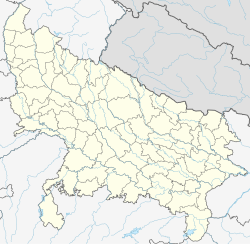Noida International Airport | |||||||||||
|---|---|---|---|---|---|---|---|---|---|---|---|
 | |||||||||||
| Summary | |||||||||||
| Airport type | Public | ||||||||||
| Owner | Noida International Airport Limited (NIAL) | ||||||||||
| Operator | Yamuna International Airport Private Limited (YIAPL) (an SPE of Zurich Airport AG) | ||||||||||
| Serves | |||||||||||
| Location | Jewar, Gautam Buddha Nagar district, Uttar Pradesh, India [1] | ||||||||||
| Opened | 30 October 2025 | ||||||||||
| Coordinates | 28°10′12″N077°36′36″E / 28.17000°N 77.61000°E | ||||||||||
| Website | www | ||||||||||
| Map | |||||||||||
| Runways | |||||||||||
| |||||||||||
Noida International Airport( IATA : DXN, ICAO : VIND) [2] [3] [4] [5] is an international airport under construction near Jewar in YEIDA city of Gautam Buddha Nagar district of Uttar Pradesh state of India. The airport is built to handle 12 million passengers annually in the phase-1, growing to 60-120 million by 2050 in subsequent phases. [6] Noida and Hisar International Airports are being developed as an alternative to heavily trafficked Indira Gandhi International Airport under the NCR Plan, [7] with Noida airport set to be the third commercial airport in the Delhi NCR region, after IGI Delhi and Hindon Airports. [8] [9]
Contents
- History
- Summary of phases
- Phase-1
- Phase-2
- Facilities
- Connectivity
- Ground Transportation Centre
- Buses
- Road
- Railway
- Issues
- Poor connectivity
- Ecological threats
- Current status
- See also
- References
- External links
Repeatedly delayed, as of August 2025 the airport is planned to open in November 2025. [10]




